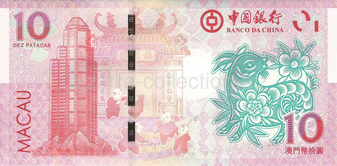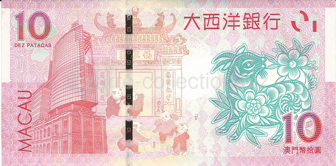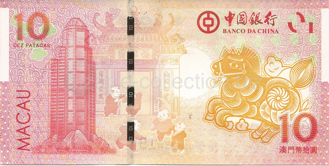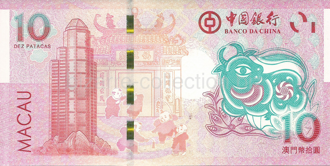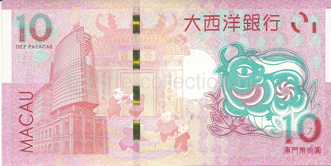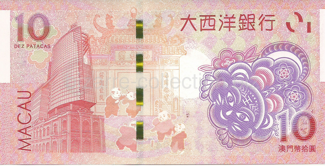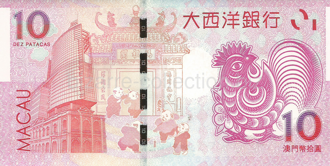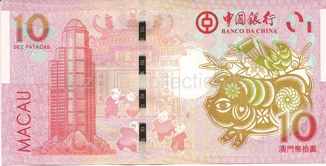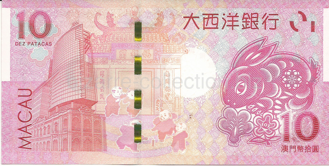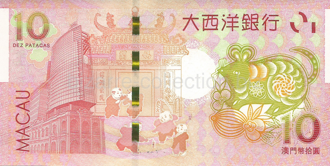Articles
La propriété privée

Maison de l'Ange et du Diable

"Black Penny"
The first postage stamp in the world was the UK brand "Black Penny", which was introduced in May 1840. The brand name is due to its nominal value - 1 penny and black color, in which it is executed.
The inventor of brands is Rowland Hill (although according to some evidence the inventor of the brand was still the seller of books by D. Chalmers). After the successful implementation of his idea, Hill received from the British government 20 thousand pounds sterling - the amount for those times is very serious.
As early as 1837, Hill proposed the introduction of a single postage rate that would be paid by the sender. This idea was voiced in his brochure "The reform of the mail, its importance and expediency." It was in this work Hill noted that the payment of postal services can be certified by a small piece of paper with a seal on one side and an adhesive layer - on the other, which will be glued to the envelope.
For three years there was a discussion of this proposal in the press and the British Parliament. In August 1839 the Parliament agreed with the idea of Hill and with him a contract was signed for two years to carry out postal reform. A contest was announced for the best sketch of the brand. Nearly 2,700 brand projects were submitted for the competition. The winner of the competition was a sketch by Henry Cole featuring the profile of Queen Victoria.
As a result of these events, on May 6, 1840, the first postage stamp was issued, which was later called the "Black Penny". However, part of the circulation was sold before this date - from May 1. Almost simultaneously with this, the second postage stamp "Blue Twopence" was also released. This is evidenced by the information on the existence of a letter dated 2 May, on which stamps of 1 and 2 pence are stuck.
The black penny (as well as the Blue Twopenny) was printed by the method of metallography. On the upper edge was the inscription "Postage" ("Postage"), on the bottom - "One penny" and "Two pennies," respectively. A feature of these brands is the presence in the lower corners of letters, by which you can determine the position of the mark on the brand sheet (row and place in this row).
The full sheet of the "Black Penny" consisted of 240 brands (20 rows of 12 brands). One such almost full sheet of 216 marks was found glued to the wall of the post office. When separating it from the wall, the adhesive layer was damaged. Now this unique sheet is kept in the British royal collection and in rare cases is exhibited at the largest philatelic exhibitions.
In circulation almost 70 million marks have been entered and for today they have remained much. However, because of the historical value of the "Black Penny", he is in great demand among philatelists. The stamped stamp can be purchased within 200 dollars, and clean - for 1-2 thousand dollars. Although a copy in good condition can cost and is much more expensive. So, in March 2009, at Sotheby's auction, a net "Black Penny" was sold for £ 2.6 thousand.
"British Guiana"

June 17, 2014 a significant event for philately took place - a unique specimen of British Guiana, the "Princess of Philately" was traded. At the auction "Sothebys" in New York, the rates reached 9.5 million US dollars. This is the highest price ever paid for a postage stamp. According to the auctioneers, the brand was bought by a collector, not an investor. So, apparently, it will not be back to the market soon.
Before the auction, experts estimated the sale of "British Guiana" for 10-20 million dollars. The price did not reach the maximum, but the maximum, perhaps, was set on the wave of pre-sale fever, because not every year are sold objects of this class.
The last time "British Guiana" was sold almost 35 years ago. Think about this figure! It was sold at the well-known auction of Segal in 1980. The scandal collector John DuPont bought the brand for 935 thousand dollars. The last time the brand was seen in 1987, at a philatelic exhibition in Australia. DuPont himself, boldly noted in philatelic history, in 1997, went to prison for a murder, where he died in 2010.
"Royal Philatelic collection"

First a bit of history. As you know, the first postage stamp appeared in 1840 in England. On May 1, 1840, the printed circulation was allowed for pre-sale at the London post offices, and on May 6, an official notification was received that all postage letters were accepted for postage. This day is the earliest death of the first-born of the world's philately - "Black Penny", and envelopes with the stamp of the postmark dated May 6 - the cherished dream of any collector. Although, for the sake of justice, it should be noted that the only envelope with the so-called "philatelic suppression" of May 1, when the brands had no official circulation, is known, but are already on sale. Who and why made such a souvenir - is unknown. Nevertheless, at the end of the last century this envelope was sold in Switzerland at the auction of D. Feldman for almost a million dollars.
If this envelope was official, it would undoubtedly have been handed over to Queen Victoria, who, although she never collected stamps, but gratefully accepted a gift on May 5 of the same year 1840, that is, just before the introduction of postage stamps with her portrait, two such miniatures from the head of the royal treasury F. Barring. By the way, it was he who subsequently gave sketches of the very first stamps to the Duke of York, whose elder brother, the Duke of Wales, was already interested in stamps at the age of twelve.
As is evident from a letter kept in the royal archives, the Duke of Wales, the legitimate heir to the throne who later became King Edward VII, was fascinated with collecting so much that he personally sent out his correspondence to the colonial postmasters with a request to send him new stamps. At the same time one of the oldest not only in England, but also in the whole world of trade philatelic houses, S. Gibbons began to regularly sell postage stamps to the royal court. Thus, it is known that it was at the initiative of S. Gibbons that in 1891, on the occasion of the royal visit to Trinidad, a memorable overprint appeared, the proofs of which immediately fell into the august assembly. The same happened with the samples of 16 Canadian stamps, which were exhibited at the first official show of the royal collection in 1897 in London.
But it is with the name of the heir of Edward VII, the prince of York George, who received the title of heir to the throne of the Prince of Wales, the future King George V, after the elder brother's accession to the English throne, connected with the "golden period" of the formation of the collection. The crowned collector was so keen on philately that he somehow secretly left Buckingham Palace, frightening the courtiers to incognito on the continent incognito to acquire one and only brand of three issues of British colonies that were absent from the royal assembly ...
It was so. One day in 1903, Buckingham Palace was rumored that the Prince of Wales had disappeared. Heir to the throne could not be found anywhere - neither in his private apartment, nor in any other corner of the palace and the adjacent park. The excitement was settled only on the second day, when Prince George also unexpectedly and with a happy smile reappeared in the palace. Soon the palace was filled with rumors that His Highness, secretly leaving London and moving to the continent, bought an incognito at a fabulous auction for those days (1450 pounds, which would now correspond approximately to half a million at a parity rate) to a single brand. But what! The famous "Blue Mauritius", moreover in excellent condition.
To the puzzled reproaches of the nearest entourage, the future king replied that he participated personally or through proxies in that auction, such a profitable purchase would hardly have been successful. After all, if the sellers found out who was going to buy a unique brand, which was heard not only by philatelists, but also by those who were far from collecting (for reference: Mavrikiev, one of which is blue and the second is of red-orange color, it is known in the world only 22 copies with the detailed biography of each of them), then the price would instantly jump to obscurity, which would deprive the most august collector of the opportunity to successfully replenish his collection.
Time showed that the prince was right. When in 1917 the famous philatelist of "all times and peoples" F. Ferrari died, then on the auctions that followed his death, a unique brand of British Guiana known in one single instance was never bought for the royal collection, but for an even more fabulous the amount of almost 6,000 pounds migrated to the assembly of one millionaire. By the way, even taking into account inflationary processes and parity calculations, the purchase of the future of George V today could be resold at least twice as much, that is, for more than a million pounds, as graphs of the growth in prices for philatelic materials over the past half century, built by experts of the firm S. Gibbons. But back to the story of the royal collection.

Not only George V, but also his overseas cousin Nicholas II was not strangers to philately. However, in two families the attitude towards the brands was somewhat different. So, if the predecessor of King George on the throne selflessly surrendered to collecting and even repeatedly published in the famous "column of F. Melville," vying in popularity with himself E. Pemberton - the "father of philatelic journalism" of the XIX century, then the father of the Russian emperor Alexander III collected, or rather , "Picked up", domestic brands, neatly folding a stack of dried copies, taken from letters, in matchboxes. Under the influence of the son of the court jeweler K. Faberge Agathon, seriously addicted to philately, he began " dbirat "brand and Nicholas II. It is thanks to this circumstance that the famous collection of samples and sketches of the jubilee "Romanovskaya series", which was kept before the events of 1917 in the Winter Palace, never reached Buckingham Palace, despite persistent requests of the cousin-philatelist. By the way, later all four albums were removed from Soviet Russia and returned to their homeland from Switzerland only at the end of the 20th century.
Philatelists of the turn of the XIX-XX centuries sought, if not "to collect everything", then at least include in their collections more rarities, and first of all first brands of different countries. Georg V was not an exception to this traditional for his time approach, seeking not only to fully gather everything related to Britain and the British Empire, but also to place in the royal albums the most famous brands of the world. That's what the current chief curator of the royal collection, T. Alexander, says about this: "Initially, despite the interest in the Black Penny, not everyone tried to use postage stamps for sending their correspondence, which were sold only in the UK for three years. Gradually, other countries began to follow the experience of the United Kingdom, and after fifteen years their list reached thirty. Of course, the growth in the number of issuers has led to an increase in interest in their collectors And about five or six years later, the royal family also became involved in philately, while its young members sought to obtain not only the stamps of their country and its colonies, but also numerous European and overseas, including the United States, issues. In 1867, 104 countries had already been issued, despite the fact that by the tenth anniversary of the Black Penny, their own brands had only been published in nineteen states and territories dependent on the United Kingdom. "
The brands of this very first decade, along with unique materials related to the history of the release of the "Black Penny" and "Blue Twopence", constitute the main value of the royal collection, the volume of which quantitatively contains several million units of storage. This, of course, is the first brand of Swiss Cantons - Basel, Geneva and Zurich, appeared in 1843 - 1845, then this is the first North American brand in 1847 with portraits of George Washington and Benjamin Franklin. Particularly should be highlighted a few first colonial issues that are now related to the world's rarities, and first of all postmaster marks of Bermuda and the British Guiana brand of the year 1850, nicknamed philatelists as "cotton bales" because they were found on messages related to trade in cotton, supplied from this South American colony to the metropolis. As for Bermuda postage stamps, their history is particularly interesting and deserves to be dwelled on in more detail. In 1848, the postmaster of the main city of this Caribbean colony of Great Britain, W. Perrot, eagerly awaited from behind the ocean the arrival of a sailboat with the ordered stamps for Bermuda. However, the ship was late, and the local colonial elite was impatient, like in the metropolis, to paste on its correspondence fashion postage stamps. And then the postmaster decided to use the stamp at his disposal for the production of a kind of timestamp. Having removed a part of the inscriptions, W. Perrault began to stamp the envelopes with his own hand, leaving his signature in the blank formed on the imprint, which certified both the authenticity of the item and its payment as a real stamp. Thanks to this decision, the name of Perrot permanently remained in the history of philately, and the surviving departures have become classics of the world's philately. King George V had to search for a long time the cherished "envelopes of Perrault", before one of the eleven surviving rarities adorned the royal collection.
.gif)
La propriété privée

Théâtre de l'Ange et du Diable


